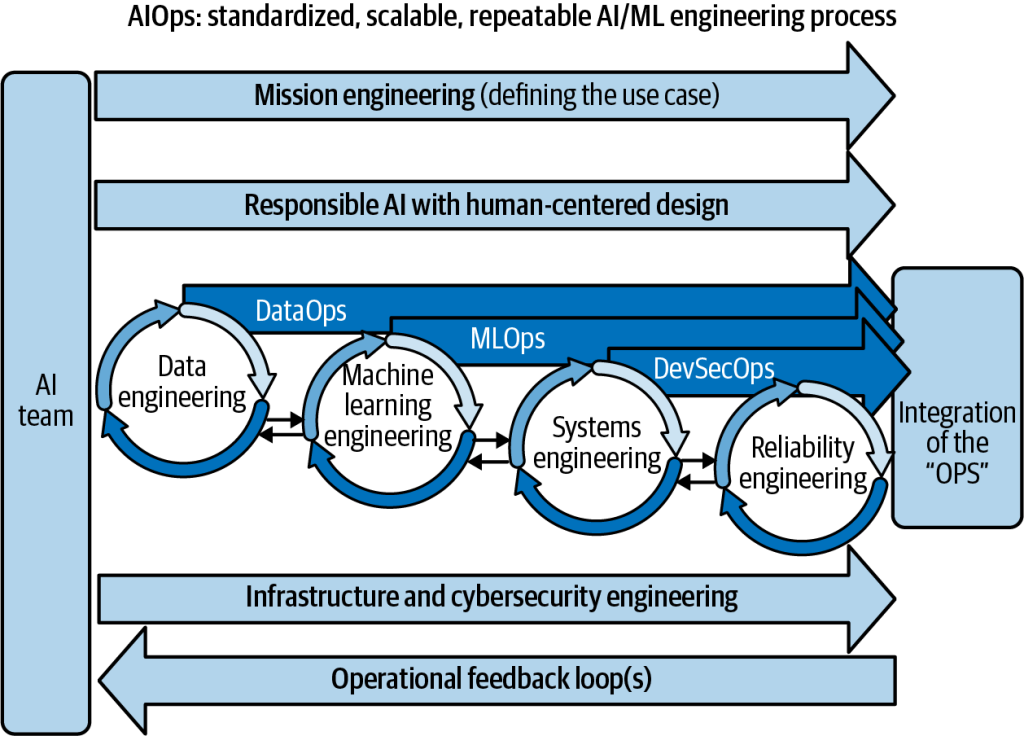Upgrade & Secure Your Future with DevOps, SRE, DevSecOps, MLOps!
We spend hours scrolling social media and waste money on things we forget, but won’t spend 30 minutes a day earning certifications that can change our lives.
Master in DevOps, SRE, DevSecOps & MLOps by DevOps School!
Learn from Guru Rajesh Kumar and double your salary in just one year.

Are you tired of manual processes and siloed teams causing delays and security gaps in your DevSecOps pipeline? Fear not, as AIOps may be the solution you’ve been looking for. In this 5000-word blog post, we’ll dive into the intricacies of using AIOps for DevSecOps and how it can transform your development process.
What is AIOps?
Before we dive into the nitty-gritty of using AIOps for DevSecOps, let’s first define what AIOps really means. AIOps, or Artificial Intelligence for IT Operations, refers to the use of AI and machine learning to automate and optimize IT operations tasks. By leveraging AI and machine learning algorithms, AIOps can identify patterns, predict issues, and automate remediation processes.
The Benefits of AIOps for DevSecOps
Implementing AIOps in your DevSecOps pipeline can bring a multitude of benefits. Here are just a few:

Improved Efficiency
One of the most significant benefits of AIOps is improved efficiency. By automating tasks such as monitoring, alerting, and remediation, AIOps can free up your team’s time and allow them to focus on more critical tasks. This can lead to faster development cycles and quicker time-to-market.
Increased Security
Security is a top concern for any DevOps team, and AIOps can help enhance your security posture. By continuously monitoring your infrastructure and identifying potential security threats, AIOps can help you stay one step ahead of attackers.
Better Collaboration
DevOps is all about collaboration, and AIOps can help foster better collaboration between teams. By breaking down silos and providing a single source of truth for all teams, AIOps can help ensure everyone is on the same page.
Predictive Analytics
AIOps can also provide predictive analytics, allowing you to identify issues before they become problems. By analyzing data from multiple sources, AIOps can identify patterns and provide insights that can help you proactively address potential issues.
How to Implement AIOps for DevSecOps
Now that we’ve covered the benefits of AIOps for DevSecOps let’s dive into how to implement it. Here are the steps you should take:

Step 1: Identify Your Goals
The first step in implementing AIOps for DevSecOps is to identify your goals. What are you trying to accomplish with AIOps? Are you looking to improve efficiency, increase security, or both? By identifying your goals, you can ensure that you’re implementing AIOps in a way that aligns with your objectives.
Step 2: Identify Your Data Sources
The next step is to identify your data sources. AIOps relies on data to function, so it’s crucial to identify which data sources you’ll be using. This may include monitoring tools, security tools, and other sources of data.
Step 3: Implement AI and Machine Learning Algorithms
Once you’ve identified your data sources, it’s time to implement AI and machine learning algorithms. These algorithms will analyze your data and provide insights that can help you identify potential issues and automate remediation processes.
Step 4: Monitor and Analyze Your Data
With your AI and machine learning algorithms in place, it’s time to monitor and analyze your data. This will allow you to identify patterns and trends that can help you proactively address issues.
Step 5: Automate Remediation Processes
Finally, it’s time to automate remediation processes. By automating tasks such as alerting and remediation, you can free up your team’s time and ensure that issues are addressed quickly and efficiently.
Conclusion
In conclusion, implementing AIOps in your DevSecOps pipeline can bring a multitude of benefits. From improved efficiency and increased security to better collaboration and predictive analytics, AIOps can help transform your development process. By following the steps outlined in this post, you can implement AIOps in a way that aligns with your goals and enhances your DevSecOps pipeline.

Leave a Reply